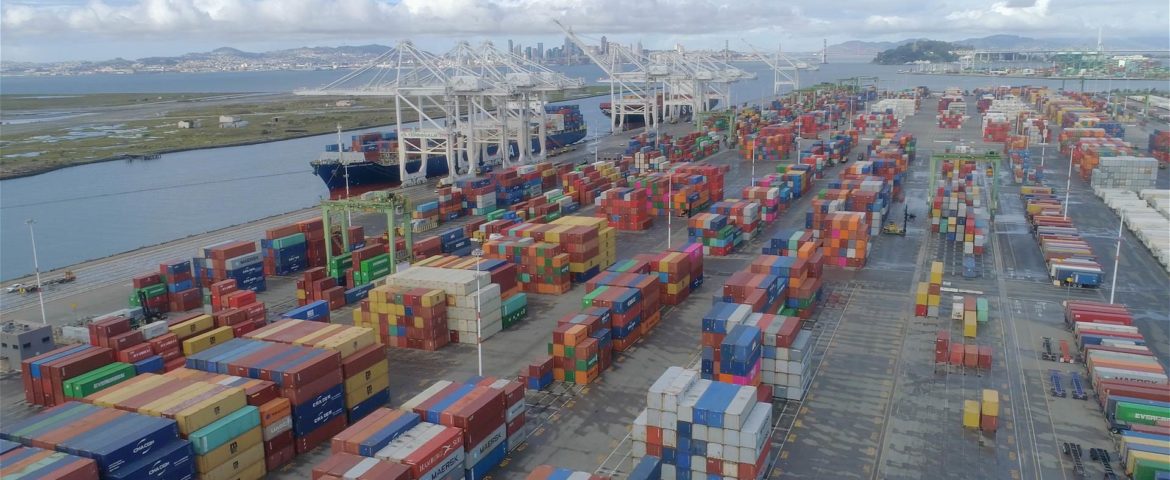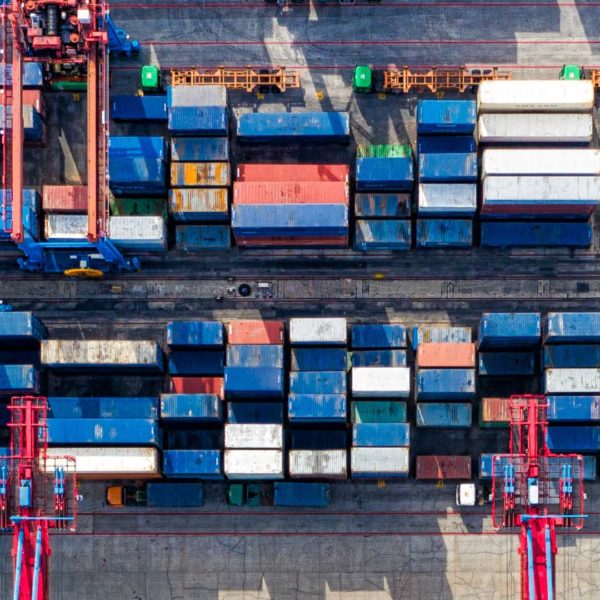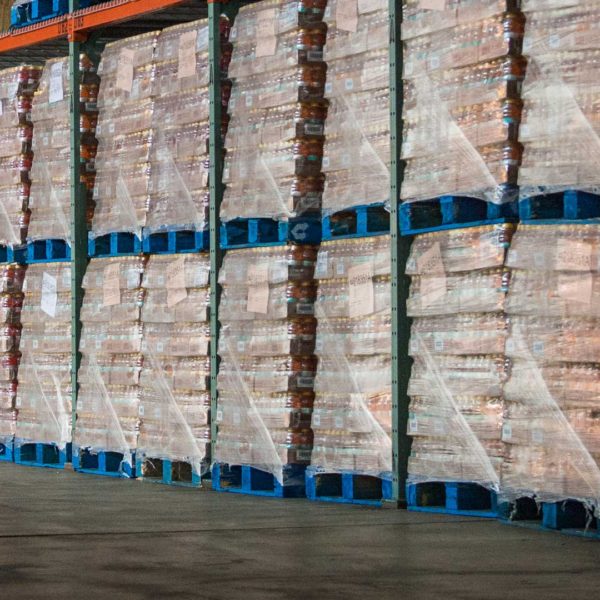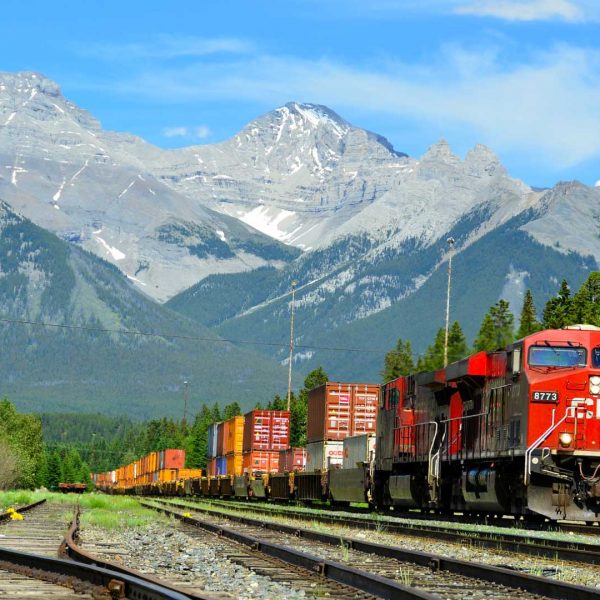Intermodal Shipping Explained
Intermodal services span a number of categories, both for domestic container shipping and international shipping.
Intermodal is an effective method to reduce freight shipping costs on longer routes, typically referenced as over 500 miles, vs over the road trucking. Often with rates dropping anywhere from 10-25% depending on the specific lane and volume.
Intermodal shipping comprises several key steps. The “first mile” using a drayage trucking to move the unloaded container to the shipper, then take the loaded container to the transload yard where the container will be moved from the over the road chassis to an intermodal rail car. From here, the train will move the load for the long haul portion of the trip, then another transload yard will facilitate the movement of the container from the train to another empty drayage chassis. The final mile segment of the trip is again handled by a drayage truck. Drayage lengths depend on the individual route and location of rail ramps but can range from 10-20 miles to well over 200 miles for shippers and receivers that are located further from intermodal transload centers.
Managed Transportation Services
Intermodal often is incorporated into managed transportation services, both domestic and international. Managed transportation can be a great strategy for growing distribution, wholesalers, manufacturers or retailers that find they are spending an exorbitant amount of time managing freight. Managed transportation is effectively outsourcing your supply chain transportation to a partner firm. This allows you to spend more time on other parts of the business vs managing ltl, trucking, and other freight services. Lane analysis is commonly employed to plan what lanes fit the domestic intermodal network best, taking into account historical freight spend and volumes.
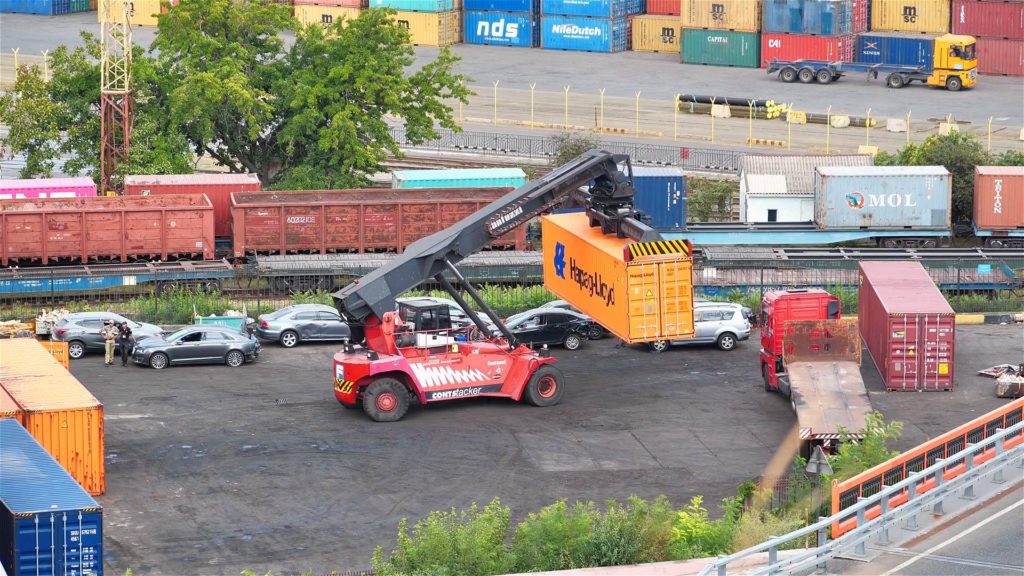
Intermodal Cross country shipping
One of the best applications for intermodal shipping services is cross-country intermodal shipping. This would be focused on long lanes, often from Southern California to Chicago, New Jersey, Pennsylvania, Atlanta, Memphis etc. A significant portion of imported goods enter the country through the ports of LA/Long Beach, Savannah, New Jersey, and Houston. Often this freight is moved via 20ft and 40ft ocean containers. These containers are then moved via rail or truck to a distribution center or even to the final receiver.
Cross country intermodal services are a direct compliment to over the road trucking, providing a lower cost alternative for freight that is not expedited. Intermodal services also provide more guaranteed capacity than over the road trucking at times of high transportation demand. As freight rates rise, and trucking capacity out of southern California is scarce, intermodal is an effective solution for many shippers.
Intermodal Rate quote
Quotes for intermodal services will depend on whether they are international or domestic, then be heavily dependent on the service lane.
The largest opportunities for intermodal in your supply chain will be on higher volume long haul lanes, where even moving a portion of the loads via intermodal can have a dramatic impact on your freight spend, especially in a period such as now where freight rates are at times more than double of what they were in prior years.
Just like over-the-road trucking, intermodal services are available via spot rate quote, or for more firm volumes, contract rates are also commonly used. When trialing intermodal into your supply chain mix, spot rates are recommended. The volatility of freight pricing and markets make contract rates riskier given how quickly prices are changing. Signing a contract before a period of a rapid rate rise will require renegotiating the contract, then if a yearlong rate contract is signed while rates are high, you could be overpaying for freight if the freight market rates drop.
We regularly provide lane analysis and comparative benchmarking to assess the effectiveness and cost savings of intermodal applied to your supply chain. Get in touch for a lane analysis or quote!
How to Ship Intermodal
Shipping Intermodal is an unknown process for many shippers and a majority of full truckload shippers simply haven’t trialed intermodal in their supply chains.
For expedited freight, intermodal is not typically the best fit, but the vast majority of freight can spend an extra day or two in transit without adverse downstream supply chain issues. More often than not, the cost savings and shipping capacity improvements are well worth an additional couple of days.
Weight is also a consideration. Due to the increased structural loads on intermodal containers, which are constantly picked up via crane, they weigh a bit more than dry vans. This results in the load capacity weight dropping slightly to 42,5000 lbs vs the traditional 45,000 lbs, typically this isn’t an issue.
Blocking and bracing should be reviewed while the containers are being loaded, as the containers can be bumped and experience a rougher ride due to the train’s slack action. Again, this typically isn’t an issue but should be thought through for more delicate goods.
Zmodal’s digital logistics platform gives you a quick and easy way to request rates and ship intermodal. Once your loads are picked up, you can easy view tracking updates, are provided digital document management and shipment analytics.
Future of Intermodal
Intermodal will become an increasingly leaned on supply chain strategy as freight rates remain elevated. No doubt more intermodal investment will continue as inland ports open, capacity is expanded and new assets are purchased by carriers.
We are hopeful that the number of intermodal lanes will increase, and intermodal service schedules will continue to improve.
Electric trucks are another near-certain reality of intermodal service providers with numerous vehicle manufacturers rolling out test vehicles and in some cases moving actual freight. Shorter haul drayage lanes are a perfect opportunity for electric trucks to be deployed as 50-100 mile route radius is within the range limitations of early electric class 8 vehicles.
As supply chains are faced with the reality of becoming more green, whether, for internal reasons or outside pressures, intermodal is a quick way for supply chains to reduce carbon emissions due to its inherent efficiencies beyond over-the-road trucking.
Get in touch!
Zmodal is a top intermodal shipping company providing door-to-door intermodal, and full truckload services nationwide throughout our digital supply chain dashboard which provides easy route searching, booking, document management, and analytics. CONTACT US if you want to lower your supply chain costs or want access to North American intermodal capacity.
